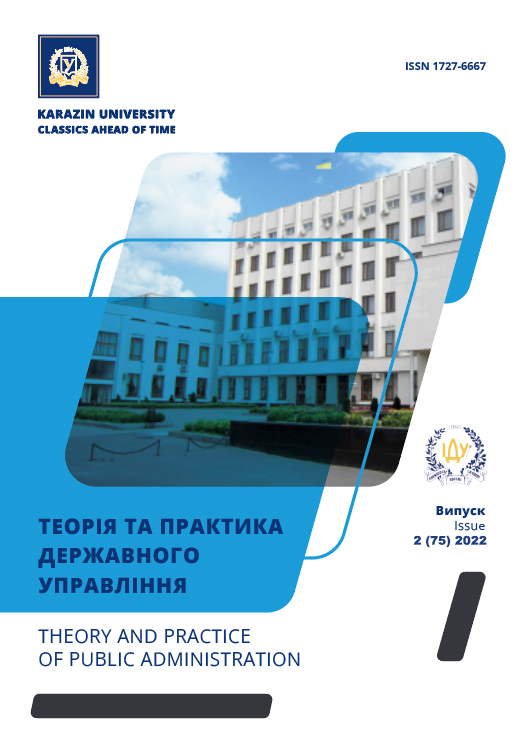Problems and Opportunities of Blockchain Technologies Implementation in Public Authorities
Abstract
Blockchain is one of the most innovative technologies that is currently used in many areas as part of the spread of web3 technologies. Although the origins of blockchain are linked to the emergence of cryptocurrencies such as Bitcoin, today’s application of blockchain technology focuses on a wider range of issues where trust is required for a large number of transactions. For this reason, many researchers today believe that these technologies have great potential for use in the public sector. The public sector can use these technologies to fulfill its role as a generator of innovation and progress, which is part of its responsibilities, and to modernize projects that will enable citizens to receive the services they need.
Therefore, this work aims to determine the main factors of success or failure in the implementation of blockchain technology in public authorities based on the analysis of existing experience in this area, in particular, in EU member states.
Blockchain has proven useful for government agencies for several reasons. First, blockchain is a technology characterized by the ability to generate trust in information and processes in a heterogeneous context with a large number of participants and users. Second, blockchain facilitates governance by leaving no traces and acts as a tool to promote transparency, as it allows people to know who did what and when. Third, it eliminates the need for a centralized certificate authority to control access and use of services by large groups of people. Fourth, the successful development of blockchain-based systems can lead to significant cost savings.
However, the analysis shows that authorities are not yet ready to widely use and offer blockchain-based services. In many cases, a lack of understanding of the benefits and opportunities, as well as a still unclear interpretation of the legal and regulatory environment, prevent senior executives from making decisions that may involve greater risk. With this in mind, we believe that the implementation of blockchain technology in the public sector can be facilitated by the implementation of blockchain systems as a complement to existing tracking and transparency systems and processes, as well as increasing their efficiency while simultaneously reducing the cost of services provided. This will require the development of adaptive management structures in public institutions aimed at developing reasonable and acceptable solutions to solve real problems.
Downloads
References
López-Zambrano, C.R., Camberos-Castro, M., & Villarreal-Peralta, E.M. (2021). The determinants of trust and perceived risk on bitcoin users. Retos/Revista de Ciencias de la Administración y Economía, vol. 11, n. 22, 199-215.
Valdavida, M. C. (2019). Blockchain in public sector, an international view. Revista Vasca de Gestión de Personas y Organizaciones Públicas, n. 16, 20–29.
Tan, E., Mahula, S., & Vrompvoets, J. (2021). Blockchain governance in the public sector: A conceptual framework for public management. Government Information Quarterly. Retrieved from: https://doi.org/10.1016/j.giq.2021.101625
Lindman, J. (2020). The uncertain promise of blockchain for government. OECD Working Papers on Public Governance, Paris, OECD Publishing. Retrieved from: https://doi.org/10.1787/d031cd67-en
Gartner, A. (2021). Hype Cycle for Blockchain. Retrieved from: https://www.gartner.com/interactive/hc/4003463?ref=solrAll&refval=325005556
Renteria, N., Wilson, T., & Strohecker, K. (2021). In a world first, El Salvador makes bitcoin legal tender. Reuters, 06.09. Retrieved from: https://www.reuters.com/world/americas/el-salvador-approves-first-law-bitcoin-legal-te nder-2021-06-09
Howcroft E. (2021). Digital-only artwork fetches nearly $70 million at Christie’s. Reuters. Retrieved from: www.reuters.com/article/us-auction-christie-s-nft-idUS
Bitcoin Clean Energy Initiative memo (2021). Retrieved from: https://squareup.com/us/en/press/bcei- white-paper
Naqvi, N., Hussain, M. (2020). Evidence-Based Blockchain: Findings form a Global Study of Blockchain Projects and Start-up Companies. The Journal of The British Blockchain Association, September. Retrieved from: https://doi.org/10.31585/jbba-3-2-(8)2020
Alvrilionis, D., Hardjono, T. (2021) Towards Blockchain-enabled Open Architectures for Scalable Digital Asset Platforms. ArXiv, 24 Oct. Retrieved from: https://arxiv.org/abs/2110.12553
Schrepel, T. (2021). Smart Contracts and the Digital Single Market Through the Lens of a ‘Law + Technology’ Approach. European Commission. Retrieved from: https://ssrn.com/abstract=3947174
Ragnedda, M., Destefanis, G. (2019). Blockchain and Web 3.0: Social, Economic, and Technological Challenges. London: Routledge.
Buterin, V. (2017). The meaning of decentralization. Medium.com. Retrieved from: https://medium.com/@VitalikButerin/the-meaning-of-decentralization-a0c92b76a274
Antonopoulos, A. (2020). Official Twitter account. Retrieved from: https://twitter.com/aantonop/status/1257319103527698434
Bodó, B., Giannopoulou A. (2019). The Logics of Technology Decentralization - The Case of Distributed Ledger Technologies. Retrieved from: https://ssrn.com/abstract=3330590
Mashaw, J. L. (2006). Accountability and Institutional Design: Some Thoughts on the Grammar of Governance. In Public Accountability, Designs, Dilemmas and Experiences, edited by Michael W. Dowdle (pp. 115-156). Cambridge: Cambridge University Press.
Lessig, L. (2000). Code Is Law: On Liberty in Cyberspace. Harvard Magazine, No. 1. Retrieved from: https://harvardmaga zine.com/2000/01/code-is-law-html
Werbach, K. (2018). The blockchain and the new architecture of trust. Cambridge, MA: MIT Press.
Copyright (c) 2023 Вячеслав Дзюндзюк, Борис Дзюндзюк

This work is licensed under a Creative Commons Attribution 4.0 International License.
Authors who publish with this journal agree to the following terms:
- Authors retain copyright and grant the journal right of first publication with the work simultaneously licensed under a Creative Commons Attribution License that allows others to share the work with an acknowledgement of the work's authorship and initial publication in this journal.
- Authors are able to enter into separate, additional contractual arrangements for the non-exclusive distribution of the journal's published version of the work (e.g., post it to an institutional repository or publish it in a book), with an acknowledgement of its initial publication in this journal.
- Authors are permitted and encouraged to post their work online (e.g., in institutional repositories or on their website) prior to and during the submission process, as it can lead to productive exchanges, as well as earlier and greater citation of published work (See The Effect of Open Access).

